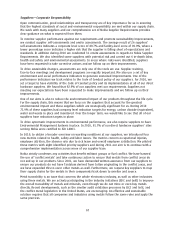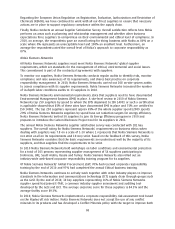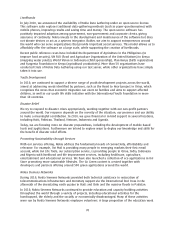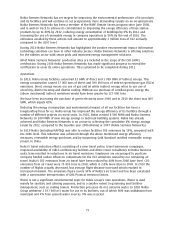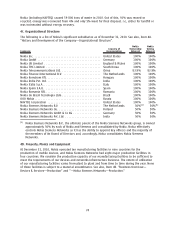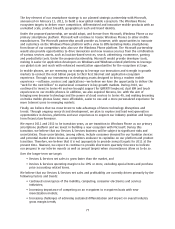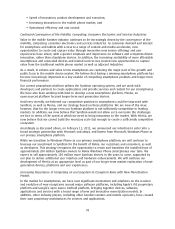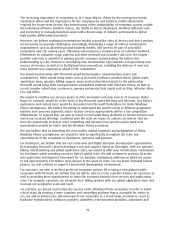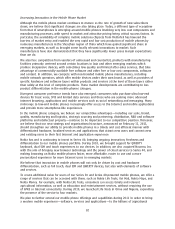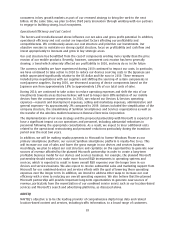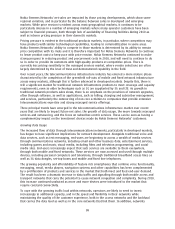Nokia 2010 Annual Report Download - page 77
Download and view the complete annual report
Please find page 77 of the 2010 Nokia annual report below. You can navigate through the pages in the report by either clicking on the pages listed below, or by using the keyword search tool below to find specific information within the annual report.responsibility and endtoend accountability for the full consumer experience, including product
development, product management and product marketing.
Starting April 1, 2011, we will present our financial information in line with the new organizational
structure and provide financial information for our three businesses: Devices & Services, NAVTEQ and
Nokia Siemens Networks. Devices & Services will include two business units: Smart Devices and Mobile
Phones as well as devices and services other and unallocated items. For IFRS financial reporting
purposes, we will have four operating and reportable segments: Smart Devices and Mobile Phones
within Devices & Services, NAVTEQ and Nokia Siemens Networks.
For a description of our organizational structure see Item 4A.—“History and Development of the
Company—Organizational Structure”. Business segment data in the following discussion is prior to
intersegment eliminations. See Note 2 to our consolidated financial statements included in Item 18
of this annual report. The following discussion should be read in conjunction with our consolidated
financial statements included in Item 18 of this annual report, Item 3D “Risk Factors” and
“ForwardLooking Statements”. Our financial statements have been prepared in accordance with IFRS.
Principal Factors & Trends Affecting our Results of Operations
Devices & Services
The principal source of net sales in our Devices & Services business is the sale of mobile devices and
services. Our mobile device portfolio ranges from basic mobile phones focused on voice capability to
smartphones which can access a broad range of web applications and services with advanced
multimedia capabilities.
In 2010, the global mobile device market benefited from improved economic and financial conditions
following the significant deterioration in demand during the second half of 2008 and 2009. According
to our preliminary estimate, in 2010 the industry mobile device volumes increased by 13% to
1.43 billion units, compared with an estimated 1.26 billion units in 2009. We estimate that our
mobile device volume market share was 32% in 2010, compared to an estimated 34% in 2009 (based
on Nokia’s revised definition of the industry mobile device market share applicable beginning in 2010
and applied retrospectively to 2009 for comparative purposes only). Moreover, smartphones continued
to capture the major part of the volume and value growth and public focus in the mobile device
market.
During 2010, we took a number of steps designed to improve our competitive position, especially in
smartphones. For example, we launched a family of new products based on our new Symbian
platform with performance and functionality enhancements, as well as focusing on Qt as the sole
application development framework for both Symbian and future MeeGo devices. In addition, we also
announced plans to simplify our services organization as well as focusing on delivering an integrated
Ovi experience across our full range of devices.
At the same time, 2010 was a year of unprecedented change in the mobile device industry. As the
competitive landscape evolved and accelerated from being product driven to ecosystem led, our
leadership position and financial performance came under increasing pressure. Until very recently, we
believed our competitive position in smartphones could be improved with Symbian, as well as MeeGo,
and our strategy based on those platforms. We are now of the view, however, that for the longer
term our Symbian platform is not sufficiently competitive in leading markets. As a result, we needed
to change our strategic direction and operational structure, and position Nokia in an industry
ecosystem that we believe has strong growth potential and represents the best option to drive our
longerterm financial performance.
Our strategy is built around three “pillars”: regaining leadership in the smartphone market,
reinforcing our leadership position in mobile phones and investing in future disruptions.
76



